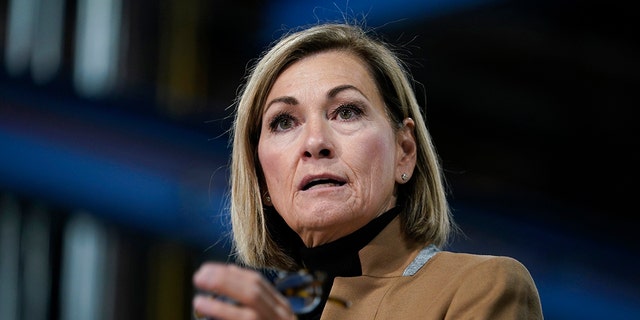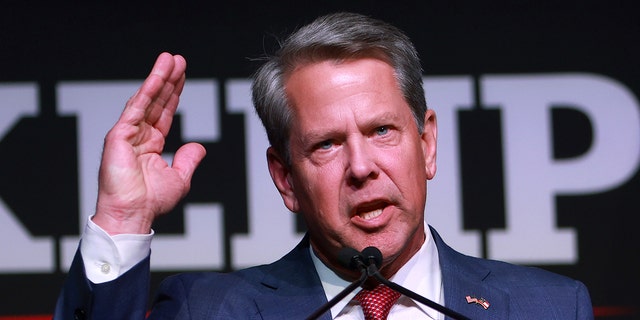
Governors who were fast to oppose pandemic lockdowns and reopen their states were able to win re-election easily in the 2022 midterms, increasing their margin of victory over their 2018 performances.
Govs. Ron DeSantis of Florida, Kristi Noem of South Dakota, Kim Reynolds of Iowa, Jared Polis of Colorado and Brian Kemp of Georgia all cruised to re-election in Tuesday’s midterms, winning by an average of 18.1 percentage points. The margins of victory for the anti-lockdown governors stood in stark contrast to their more narrow victories in 2018 when the same five candidates won by an average margin of 3.7 percentage points.
DeSantis provided perhaps the most stunning turnaround in 2022, winning re-election by 19.4 percentage points. The popular Republican governor could barely win his first bid for governor in 2018, winning by just 0.4 percentage points.
The Florida governor was famously opposed to strict lockdown measures for much of the COVID-19 pandemic. Though he ordered a stay-at-home order in the early days of the pandemic on April 2, 2020, the DeSantis lifted the order just over a month later on May 4.

Florida Gov. Ron DeSantis (James Gilbert/Getty Images)
Florida schools also shut down in-person instruction in March 2020, though all the state’s public schools were re-opened to in-person instruction by the end of the school year. Public schools were then required to reopen for in-person instruction at the beginning of the following school year, with DeSantis resisting calls to close them down through various waves of COVID-19 infections in the state.
Last month, the Republican touted the results of his push to reopen schools.
“In Florida our 4th grade students rank #3 in Reading and #4 in Math, achieving top 4 in both English and Math for the first time in state history, while lockdown California and New York aren’t even in the top 30,” DeSantis said in a statement last month.
In South Dakota, Noem also cruised to an easy victory last week, winning re-election by 26.8 percentage points. The race was much different from her 2018 victory, which saw the Republican win by just 3.4 percentage points.
BLUE STATE COVID LEARNING LOSS WIDENED RACIAL ACHIEVEMENT GAPS RELATIVE TO RED STATES: STUDY

South Dakota Gov. Kristi Noem (AP Photo/John Raoux)
Noem became a leader of the anti-lockdown movement early in the pandemic. The South Dakota governor never issued a stay-at-home order. Though Noem ordered schools to close in March 2020 and extended that order through the end of the school year in May, the state reopened its schools to in-person instruction by the start of the next school year. Like DeSantis, Noem resisted calls to close schools again during waves of positive cases in the state.
Noem publicly defended her approach throughout the pandemic, going so far as to criticize other Republicans governors who issued what she called “useless” lockdowns.
“We’ve got Republican governors across this country pretending they didn’t shut down their states; that they didn’t close their regions; that they didn’t mandate masks, that they didn’t need to issue shelter in places,” Noem said last year. “South Dakota did not do any of those… we didn’t mandate. We trusted our people and told them that personal responsibility was the best answer,”
In Iowa, Reynolds took a similar approach and did not issue a stay-at-home order early in the pandemic. The Republican governor did order schools to close across the state in April 2020, an order that was extended through the end of the school year. She began pushing for schools to reopen at the beginning of the next school year and signed legislation requiring schools open to in-person instruction in January 2021.

Iowa Gov. Kim Reynolds (AP Photo/Charlie Neibergall, File)
REMOTE LEARNING DURING CORONAVIRUS CAUSED STRESS, ANXIETY IN STUDENTS, SURVEY FINDS
The governor’s approach to the pandemic proved popular, with Reynolds winning re-election by 18.6 percentage points. The victory was 15.8 percentage points better than her 2018 performance when she won by a narrow 2.8 percentage points.
In Georgia, Kemp won his rematch with Democratic candidate Stacey Abrams by 7.6 percentage points. The margin was far more comfortable than his 2018 victory over the same opponent, when he won by just 1.4 percentage points.
Kemp did issue a stay-at-home order in response to the pandemic on April 2, 2020, but lifted the order by the end of the month. Kemp ordered schools in the state to close in March 2020, an order that was extended through the end of the school year. Kemp then began a push to reopen schools in the state, with half of the schools in Georgia opening by the start of the next school year and most of the state’s schools being opened to in-person instruction at the conclusion of the same year.

Georgia Gov. Brian Kemp (Joe Raedle/Getty Images)
Kemp also took on school masking requirements, signing a bill in March of this year that allowed parents to exempt their children from wearing masks in districts with mandates.
CLICK HERE TO GET THE FOX NEWS APP
“This will ensure that parents have the final say when it comes to the health and well-being of their child,” Kemp said at the time. “It is a common sense measure that puts parents in charge — not the government.”
In Colorado, Polis issued one of the briefest stay-at-home orders of the country’s Democratic governors in 2020, shutting down the state on March 26 but reopening it a month later. Polis also took a less strict approach than his Democratic peers to school closings, shutting down the state’s schools for the remainder of the school year in April but allowing districts to make their own choice on in-person instruction for the start of the next school year.

Colorado Gov. Jared Polis (Andy Cross/The Denver Post via Getty Images)
The governor’s performance during the pandemic was rewarded by Colorado voters, who re-elected Polis by 18.1 percentage points. The performance was 7.5 percentage points better than his 2018 run for governor when Polis won by 10.6 percentage points.
“I don’t think this is about stay-at-homes or lockdowns anymore,” Polis said in November 2020 amid pressure to issue new lockdown orders as COVID-19 cases surged in Colorado.








